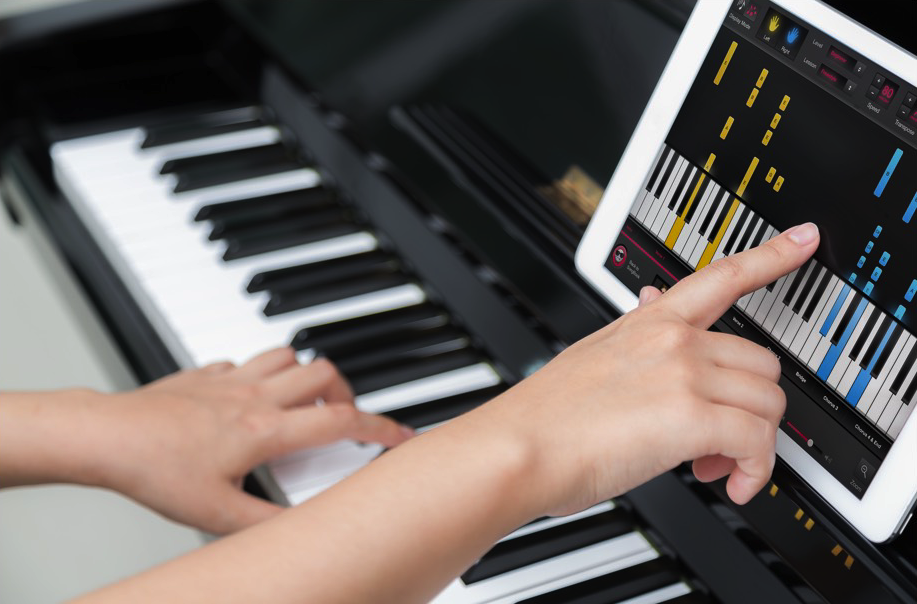One of the most valid ways to check if something is important or of any significance to the outside world is whether or not myths have been created about it. Luckily for the piano, it can check this feat off of its bucket list, because there are loads of them out there. Ranging from myths about practicing to myths about what makes a true pianist, the scope of piano myths is enormous and very varied. But despite the many differences, the one thing they all hold in common is that they are just. plain. not. true. So with that being said, we’ve selected the top 7 most popular and widely circulated piano myths out there… and we’ve busted them all! Enjoy 🙂
Myth 1: “Children learn faster than adults.”

Not so fast, young grasshopper.
We bear good news, friends! That ever so popular notion that children learn faster than adults is simply not true, at least when it comes to the piano. In reality, there is no difference. What may be true is that a child is less burdened by the stress of life, having only to worry about if there are enough marshmallows in their morning lucky charms cereal, and thus they tend to have less mental clutter. As a result, when you can finally get them to sit down for more than two minutes without fidgeting, they can more easily focus their ability on learning music, creating the illusion that children absorb new material faster than adults. However, unlike adults, children often lack desire and motivation to play, treating piano playing as a chore rather than a pleasure. This difference in attitude can often make all the difference between adults and kids, often even making up for the “advantage” kids have. The result? If you want it enough, you can do it (and even be faster than a kid 🙂 ).
Myth 2: “Long sessions of practice time are best.”

Must. Practice. Piano. And. Not. Move.
Have you ever sat yourself down by the piano and have willed yourself to not move for a whole hour until you’ve nailed a song? How many times has that worked for you? Chances are, not very many. You see, we all have experienced some degree of psychataxia while playing the piano, or in common-folk language, a brain fart. The reason is that after about 15 minutes of an activity, the average person becomes mentally fatigued. Therefore, it is actually advisable, contrary to popular belief, to practice for shorter lengths of time rather than a never-ending marathon. Short bursts of concentration repeated frequently are much more effective and produce optimal results rather than one long session. So, even if you only have 10 minutes, DO IT. You’ll likely find that a micro practice session will be both more enjoyable and more profitable for you in the long run. So don’t tire yourself out and force yourself to sit for an hour while your brain is on a mental vacation. Instead, pace yourself, take it step-by-step, and remember: slow and steady wins the race!
Myth 3: “I should never write in the sheet music.”
Remember Harry Potter and the Half-Blood Prince? Exactly. While writing on sheet music may make it look messy, as long as it’s intended for you, you should do what helps you learn best. So better have some cranky old lady tisk-tisking at your scribbled notes, than to forget the proper fingering at the time of a recital. Plus, the notes will help drill the information into your brain faster, meaning that you won’t even be needing the doodled notes for very long anyway.

Uh… most of the time notes are good
Myth 4: “I should never look at my hands when I play.”
We beg of you to hop on over to youtube and type in the simple words “pianist concert”. Go ahead and pick any video and you’ll see clear as day, concert pianists LOOK AT THEIR HANDS! Yet, for some mystifying reason, many piano teachers have built a habit out of spreading the fact that looking at your hands while playing is unprofessional. Apart from being down-right wrong, not only does looking at your hands help you visualize the music and put more emotion and emphasis on the pathos of the song, but it’s also very simply the obvious place to put your eyes. Any recital that honors itself doesn’t allow sheet music during performances, so where in the world are you supposed to look??

Would you prefer I stare at you when I play?
Myth 5: “I could never be a great pianist if I don’t have long, slender fingers.”
Haven’t we all learned already that great things come in all shapes and sizes? The rule applies to pianists as well! Both the long-fingered and the stubby-fingered alike. The myth that long-fingers are more preferable to piano playing stems from the fact that they can supposedly reach more notes simultaneously, allowing a person to play more complex songs. However, many pianists with the fabled long-fingers can report that rather than having an advantage, their elongated, slender limbs are actually prone to making MORE mistakes, as they can get “tied up in knots”. So as they say, the grass is always greener on the other side, and just because you’re “big-thumbed” doesn’t mean you should quit the piano.

I just can’t quit you!
Myth 6: “My practice session should always begin with finger drills to warm up the hands.”

Uh… not this kind of drill. Though in fairness they do both cause headaches.
You know the drill, a piano practice doesn’t start without a… drill. However, turns out this isn’t an entirely necessary step on your path to piano stardom. In fact, it is actually more advisable to start your practice session with the most difficult activity, aka Chopin, while your mind is freshest and despair hasn’t yet set in. Generally, the most mentally taxing aspect of studying piano is learning new repertoire. The assumption that we need to warm up the hands before we work on our pieces is truly misguided. It is by far more efficient to do the most difficult thing (which is usually learning the notes of a new piece) when you are at your freshest mentally and your maximum alertness, rather than wasting this valuable and limited time on repetitive and monotonous jingles.
Myth 7: “I should learn a new piece in order, from the beginning to the end.”

Seen here: Living life on the edge
Fact: Life is boring when you do things by the book. Once in a while it’s nice to spice things up, be spontaneous, and if you’re really wild- eat dessert before dinner. Well it turns out that doing things out of order is not just good for your well-being, but also happens to be the most efficient way to study a difficult composition. Rather than learning the first part first, it actually makes a lot more sense to learn the most difficult sections first. If you stop to think about it, learning a composition is like a game of sequence memory. You end up practicing over and over the first section of the piece every time you start learning a new part of the song, yet this is the easiest section and requires collectively the least time. Whereas the hardest parts that require the most time are the parts you tend to neglect each day. By starting on the hardest sections, you’ll end up playing them the most, and will get the difficult stuff out of the way early in the game when your energy is still high and your exasperation is still low. 🙂
Source: 1
















Comment